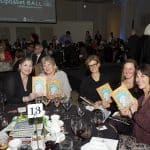Oprah’s Master Class on Moving Your Audience
When Oprah received the Cecil B. DeMille Award at the Golden Globes on Sunday, January 7, 2018, she gave a speech that immediately caught fire with a national audience that has long loved and valued Oprah’s personal and professional voice. The speech has become a cultural touchstone. Why? Because people love who Oprah is, what she stands for and what her life experience represents in this pivotal, Time’s Up moment. But, also because she gave a great, iconic speech full of tools from the master-oration toolkit available to all of us.
Specifically, here are our takeaways:
- Oprah doesn’t avoid the significance of race but instead consistently calls it out and names it. This gives her remarks authenticity.
- Personal Story. When Oprah tells stories, she gives concrete details that both set the scene and frame why the story is important. And she chooses stories that effectively build her theme and connect the dots between her ideas.
- When it’s time to bring in this current moment, she uses gratitude for the press as her launching point. But she also expresses gratitude for those speaking out, for her mother and for her mentors in ways that bring light and love into the room.
- Position/Opinion. Halfway through the speech, Oprah begins to take a stand, leaving behind personal history in favor of broad, incontrovertible truths like “Speaking your truth is the most powerful tool we all have.”
- List/Repetition. To build momentum toward the end of her speech, Oprah uses oratory repetition when she’s listing things. The use of a repeated core statement (like “We believe”) punches up the speech when you want to move hearts and minds.
- Modulation. After a section naming many professions women hold, she comes back to Recy Taylor’s single story. This tactic helps us see ourselves in the single story she tells.
- Speaks to the Collective. There are many instances where Oprah successfully builds affinities and solidarities with both her immediate audience at the Globes and with the audience watching at home. She does this using “we” and “us” language. In the middle of Recy Taylor’s story, she says, “She lived—as we all have lived—too many years in a culture broken by brutally powerful men.”
- Grounding us in time and space. Oprah begins with and uses specific dates just the right amount to keep us tied to history and the present.
- The trope she develops at the beginning—of a girl being profoundly struck by a historic moment—is brought back 3 times to acknowledge that Oprah’s award is also an historic moment impacting other little girls. She “shares the evening with all of them.”
- There is a point to this speech, and it’s a very simple one. People who overcome stay hopeful. A new day is on the horizon. These last thoughts are delivered with great conviction, one you can’t help but get swept up in.
- Oprah delivers as though she knows these stories by heart…because she does. She chooses stories that she has particular power and grace to deliver and uses them to fuel messages that are hers to command.
Are you ready for your Oprah speech? We think so! Congrats Oprah, for showing us all how it’s done. We’re so glad you did.
Watch Oprah’s speech here: https://youtu.be/TTyiq-JpM-0
Bonus extended backstage coverage: https://www.youtube.com/watch?v=4hHmQ-4Y8_k






